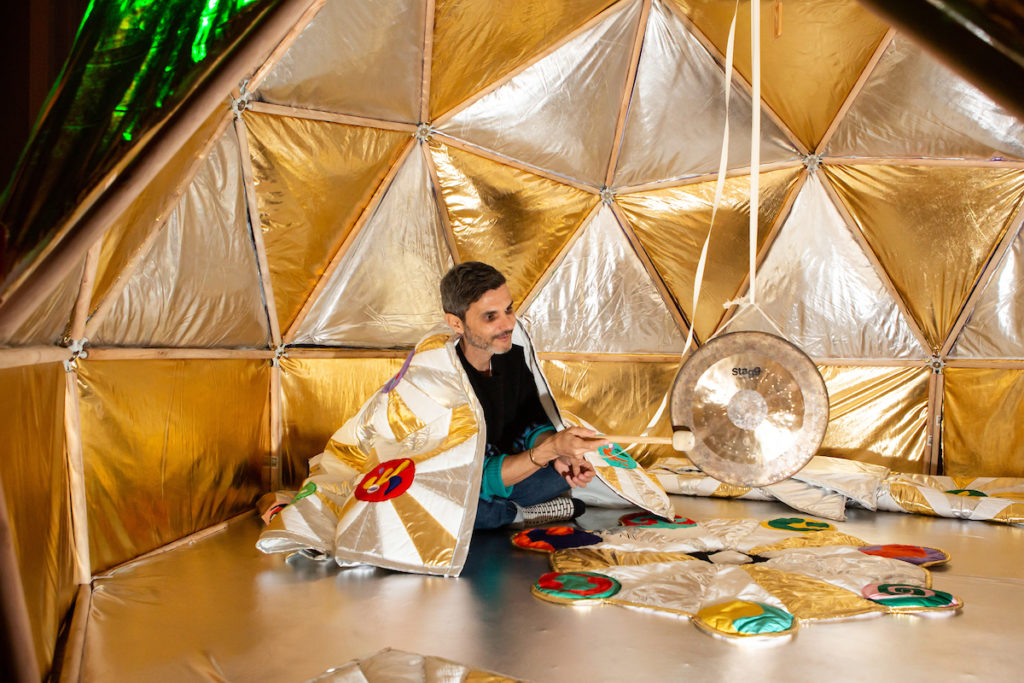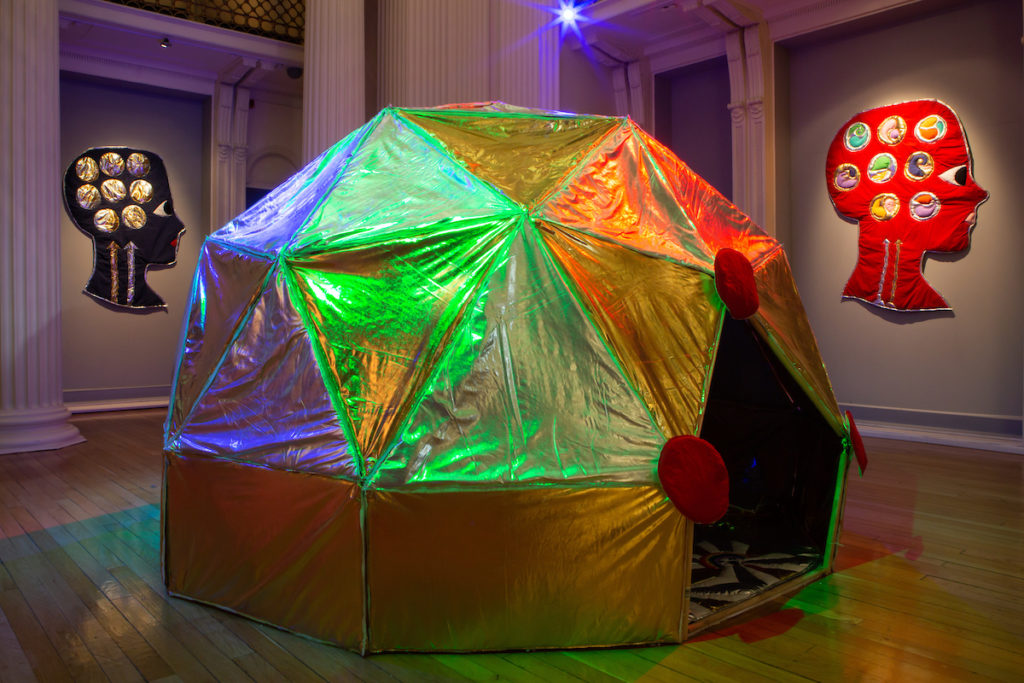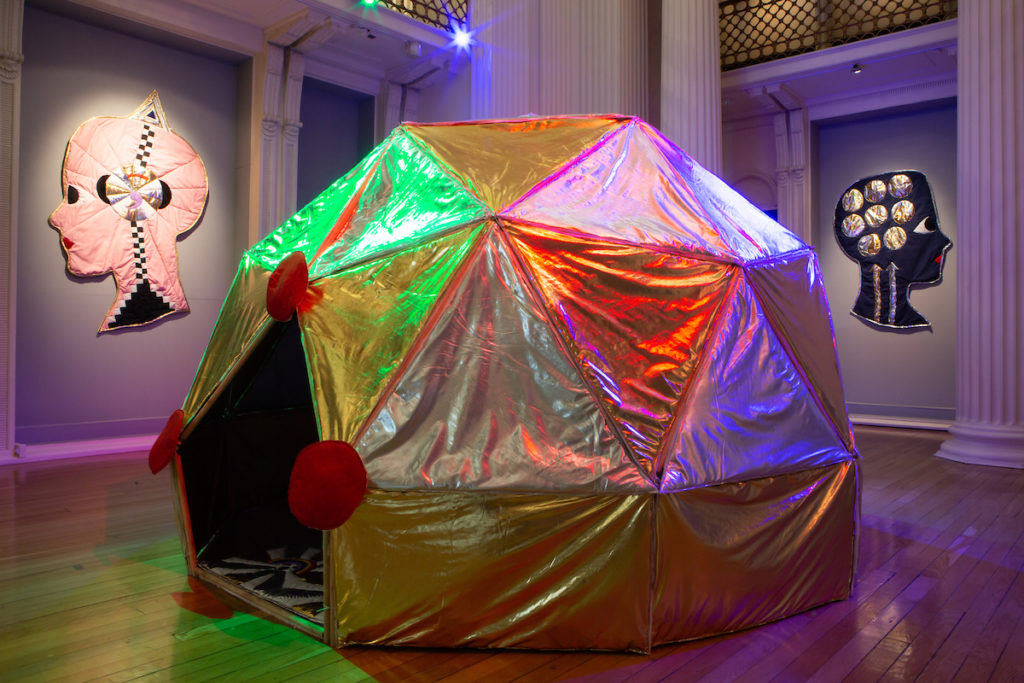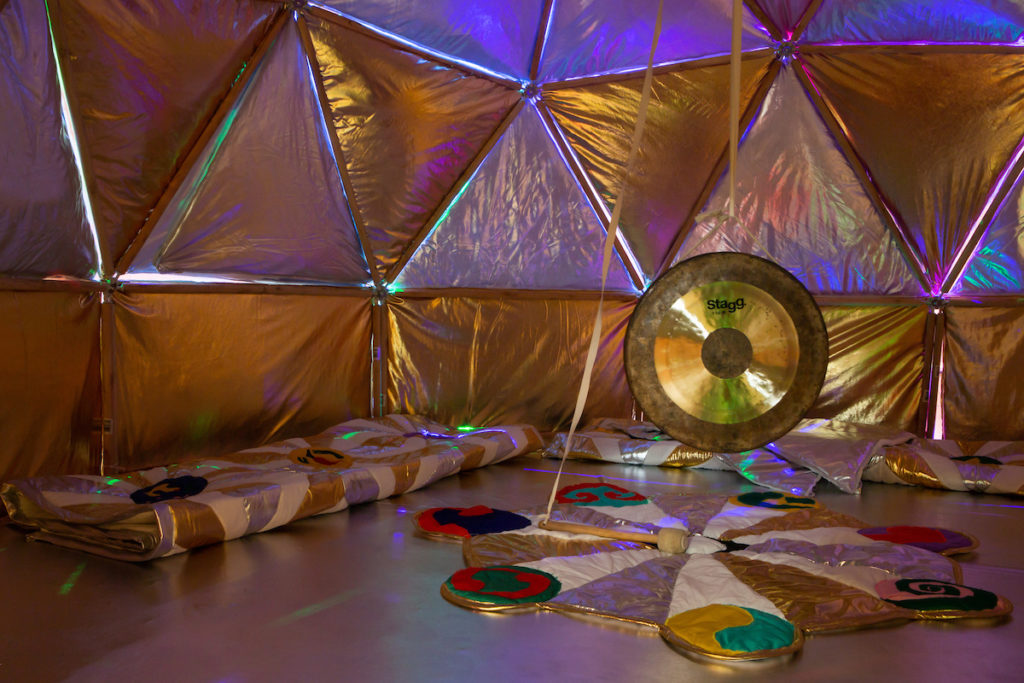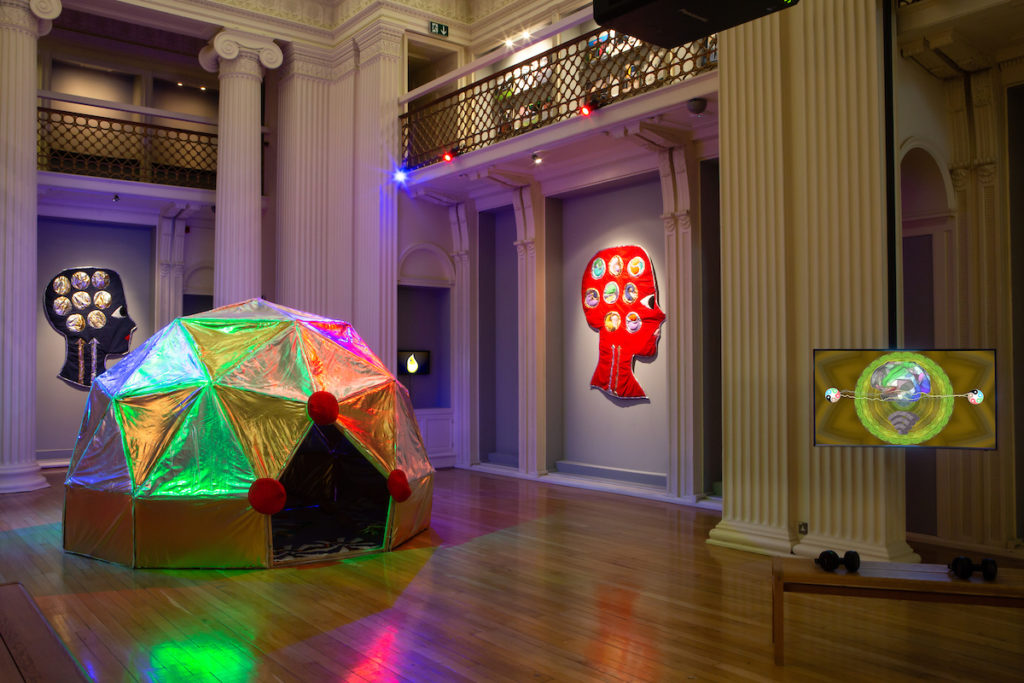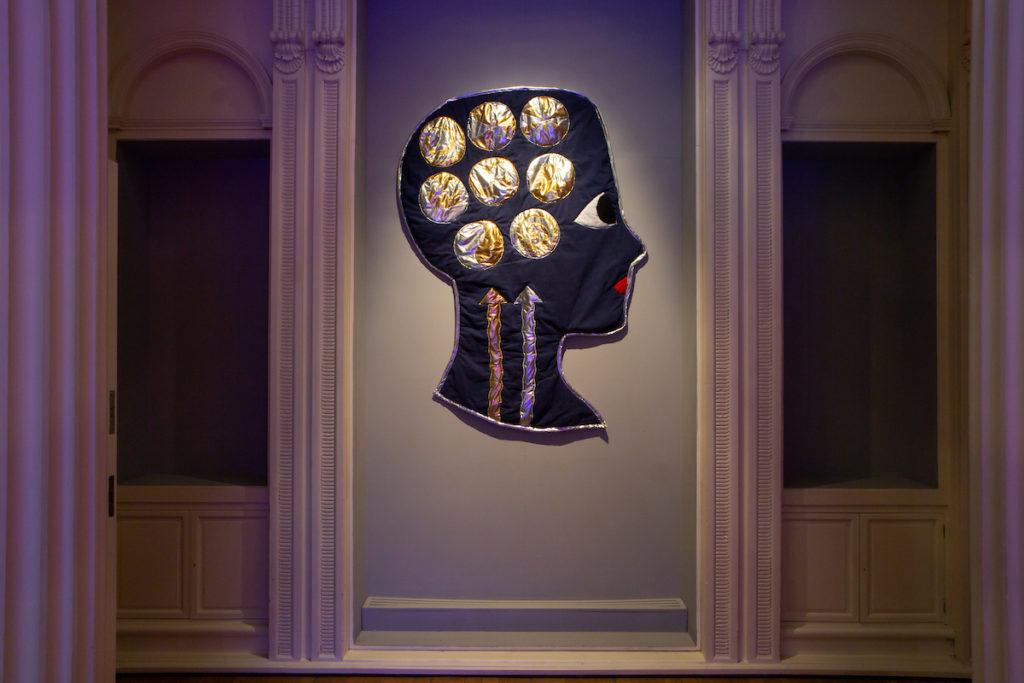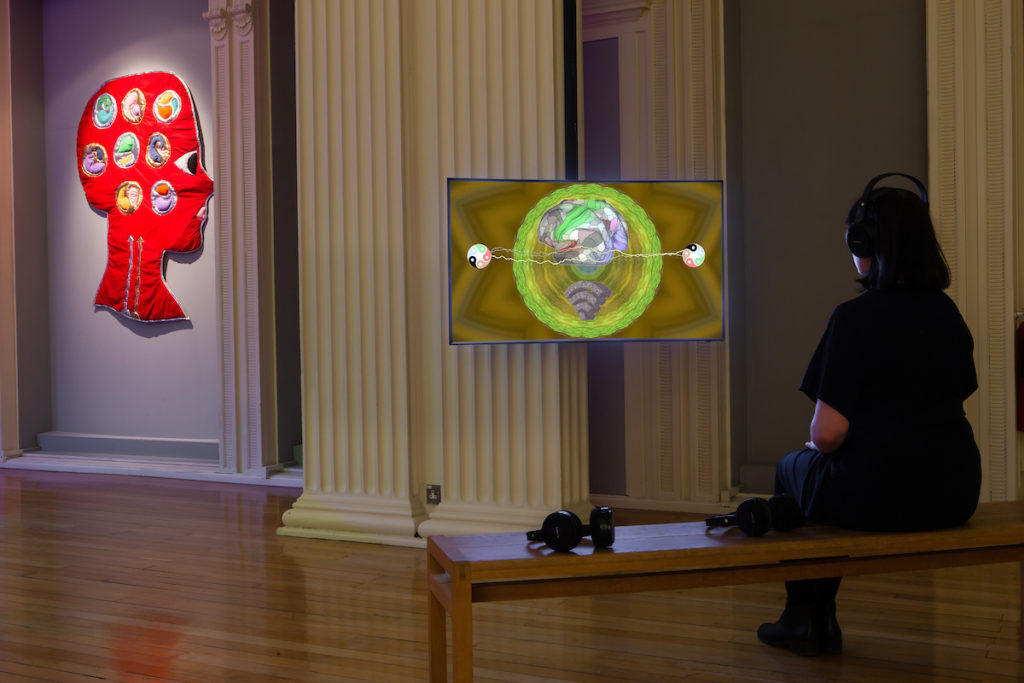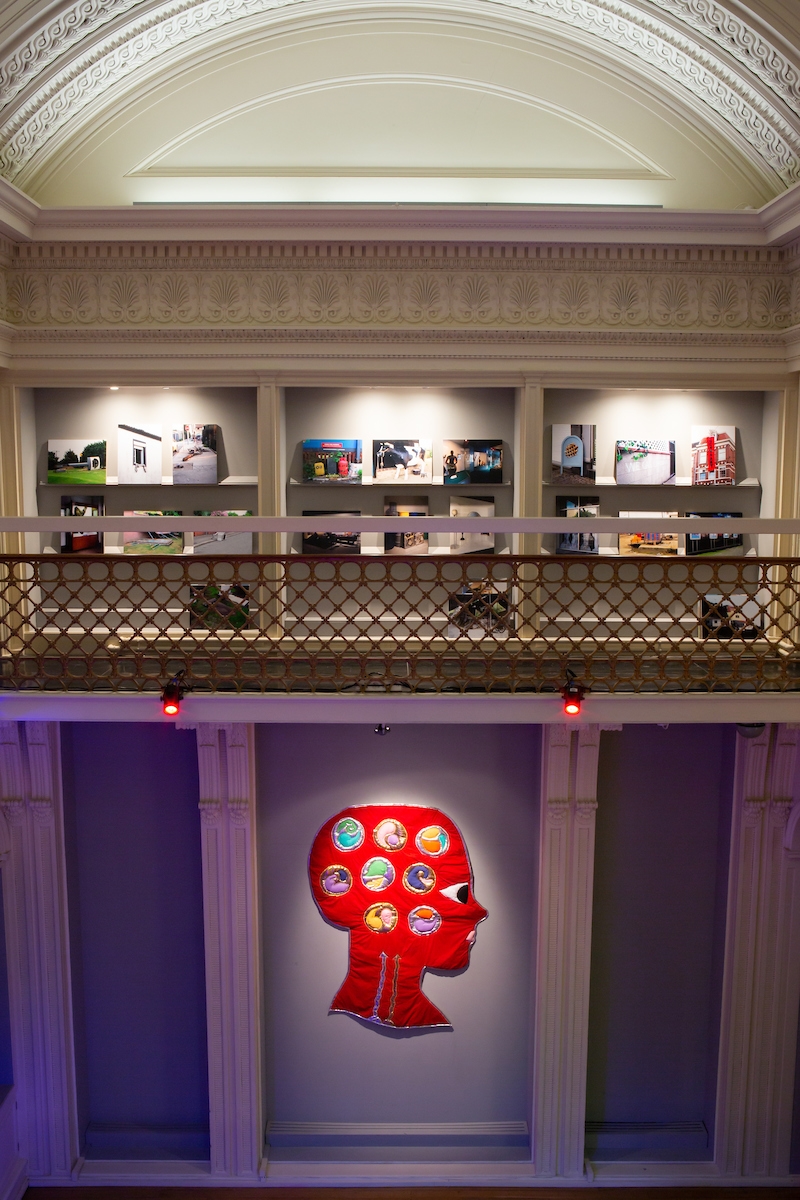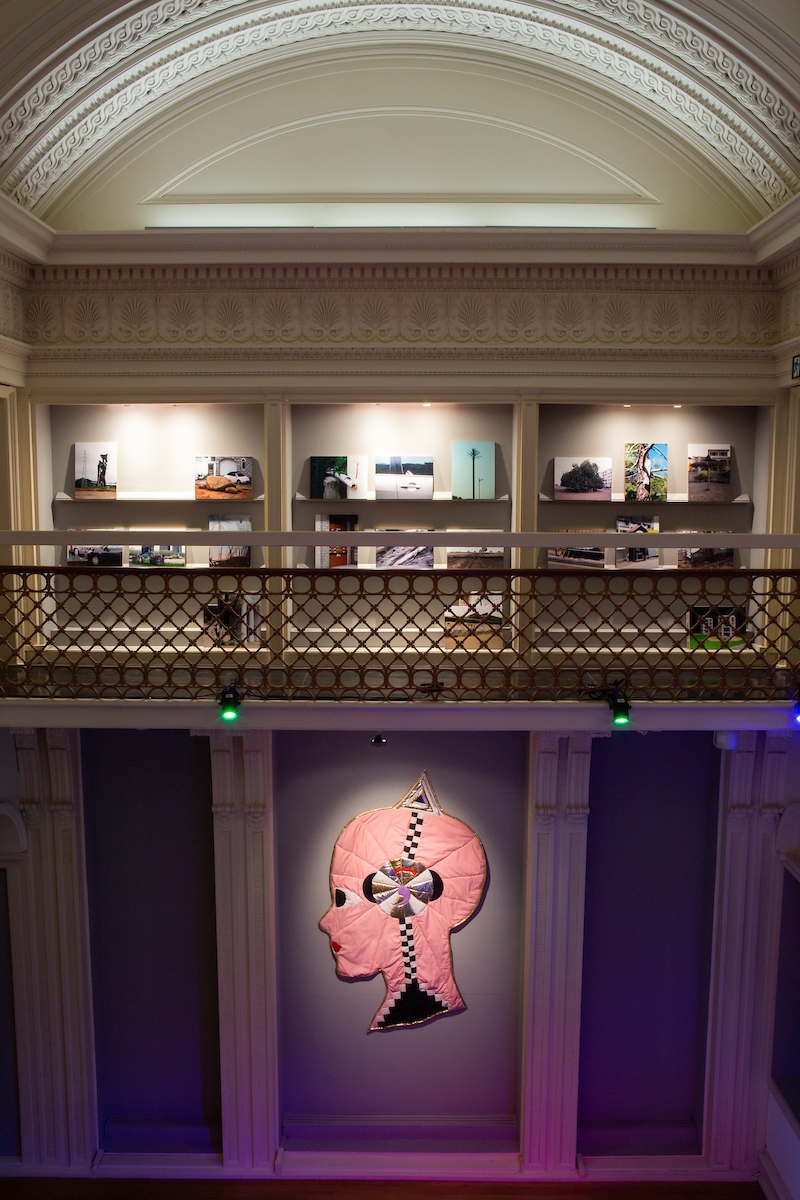Angelo Plessas
The Extended Mind
November 2, 2019–February 2, 2020Talbot Rice Gallery, University of Edinburgh
Angelo Plessas participates with Karma Dome in the exhibition “The Extended Mind” in Talbot Rice Gallery, University of Edinburgh, curated by Miranda Anderson, Tessa Giblin and James Clegg.
‘The Extended Mind’ proposes that our mind – that is our thoughts, reasoning, perception, imagination, intelligence, emotion and experience – is not simply contained within our brains. These things all take place through our bodies and the broader world, enabled by all the tools, technologies, institutions, materials and techniques we might use to orientate our understanding of ourselves.
From shadow puppetry of extinct animals, to videos exploring the impact of electromagnetic waves on our thoughts and cultures, to robots that learn through contact and the idea that digital technology is driving us towards a new collective sense of self, ‘The Extended Mind’ is set across a diverse series of journeys to other real and imagined places.
Creating an immersive installation, Angelo Plessas invites us to consider new forms of consciousness made possible by the Internet, but ones that we are only capable of fully understanding when we remove ourselves from the machinations of capitalist society.
For Plessas, the Internet is an ambivalent force and his work acts accordingly as both a talisman to ward off the malign aspects of technology in the service of capitalism, and as an invitation to celebrate its potential to build a new kind of networked spirituality. Recognising the internet as something that spills into everyday reality, he pushes his practice back and forwards across digital and analogue territories in order to consider changing boundaries and definitions for subjects including considerations of gender and labour.
Karma Dome, at the centre of the installation, evokes the retreats Plessas organised as part of the Eternal Internet Brotherhood/ Sisterhood project running from 2012 to 2017. Allowing people who have only met online to meet in remote places in the world, these retreats were founded on the premise that we can never undo what the internet has done – that it has profoundly and irrevocably reorganized consciousness – but that the internet can and must be separated from its technocratic effects in order to realise its positive potential. Plessas is concerned that people can become servile to technology and be reduced to machine-like operations, reproducing the algorithms of social media in order to increase the success of a post, for example.
As a form of resistance, Plessas adopts various spiritualist theories that promote alternative forms of embodiment and enactment that are resistant to the insidious and reductive logic of capitalism. A video essay in the space offers both context and instruction for using the dome, opening with the statement that: ‘The internet spans inside and outside, creating different bioenergetic fields and informational signals that affect the human brain and body. Never before have humans and machines been in such close commune with each other, creating a system of radical applications between us. This horizontal and vertical “collaboration” makes our bodies and minds into readable, recognizable, locatable entities through our devices. We cannot go back to being pre- internet and yet we usually find it difficult to physically function without being online.’
The materials surrounding the dome and the three head quilts in the space – Homo Noosphericus (Science), Homo Noosphericus (Spirituality), Homo Noosphericus (Awareness) – are made from materials that can block electromagnetic signals, whilst the dome itself is comprised
of materials that are thought to increase positive energies. Plessas describes these energies as ‘orgonic’, following Wilhelm Reich’s debatable theories about life forces. From the scientific perspective of distributed cognition, we might consider the idea of orgonic energy as being a kind of metaphor for how environmental and atmospheric conditions can impact upon cognition, and indeed mental well-being. Whilst karma also sits outside scientific discourses, it could also be understood as a way of trying to make sense of the feedback loops that structure one’s experiences in the world.
Visitors are welcome to remove their shoes and enter the Karma Dome. Please also visit Plessas’s website: DivineLightMission.com.
‘The Extended Mind’ is funded by The Arts and Humanities Research Council (AHRC). Myriam Lefkowitz’s off-site project Walk, Hands, Eyes (Edinburgh) is funded by Creative Scotland.
Talbot Rice Gallery
The University of Edinburgh
Old College, South Bridge
Edinburgh, EH8 9YL, UK
